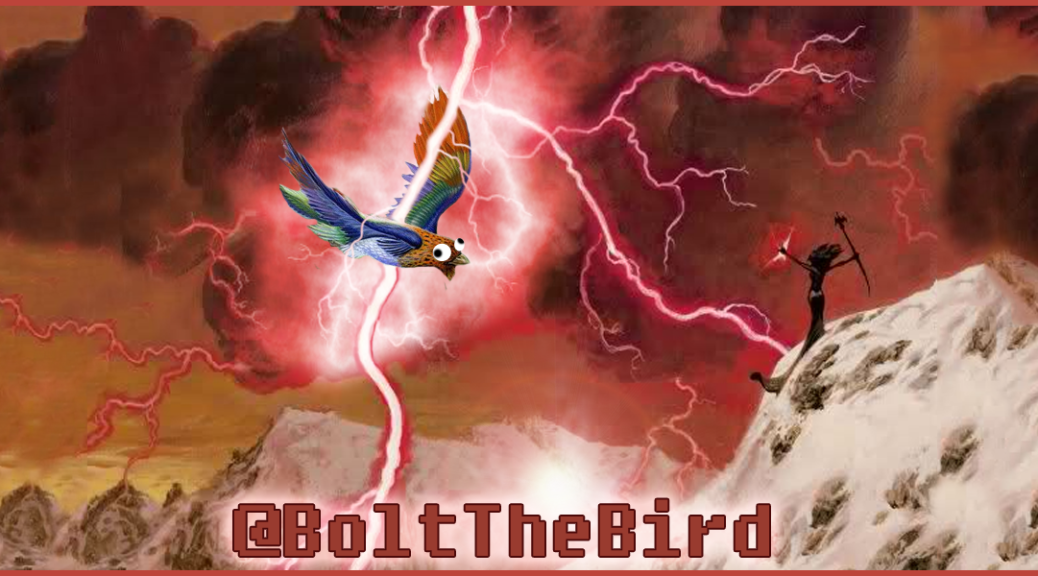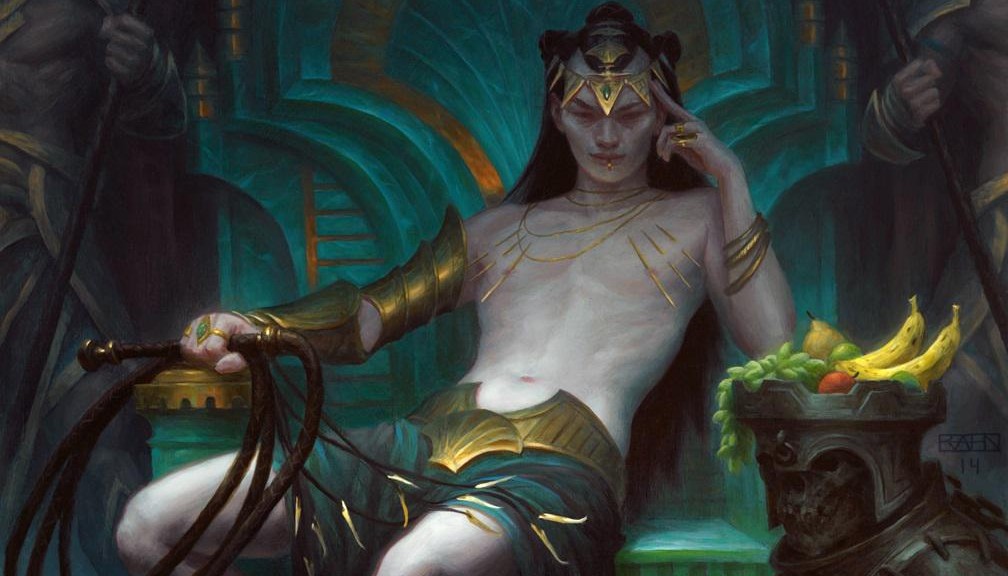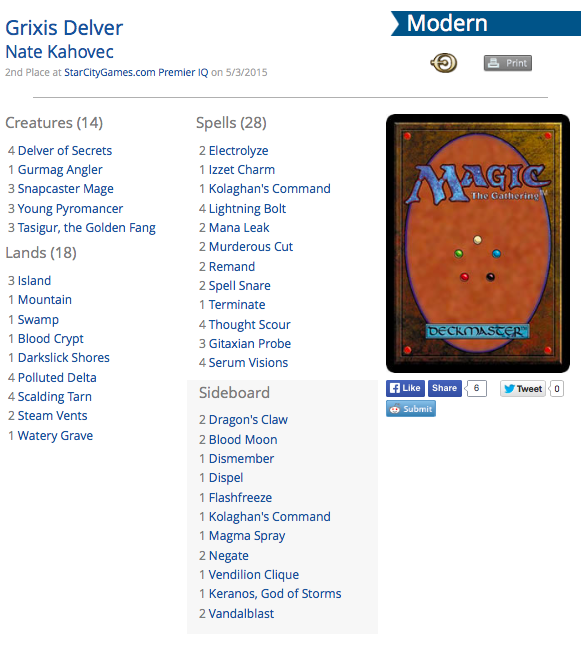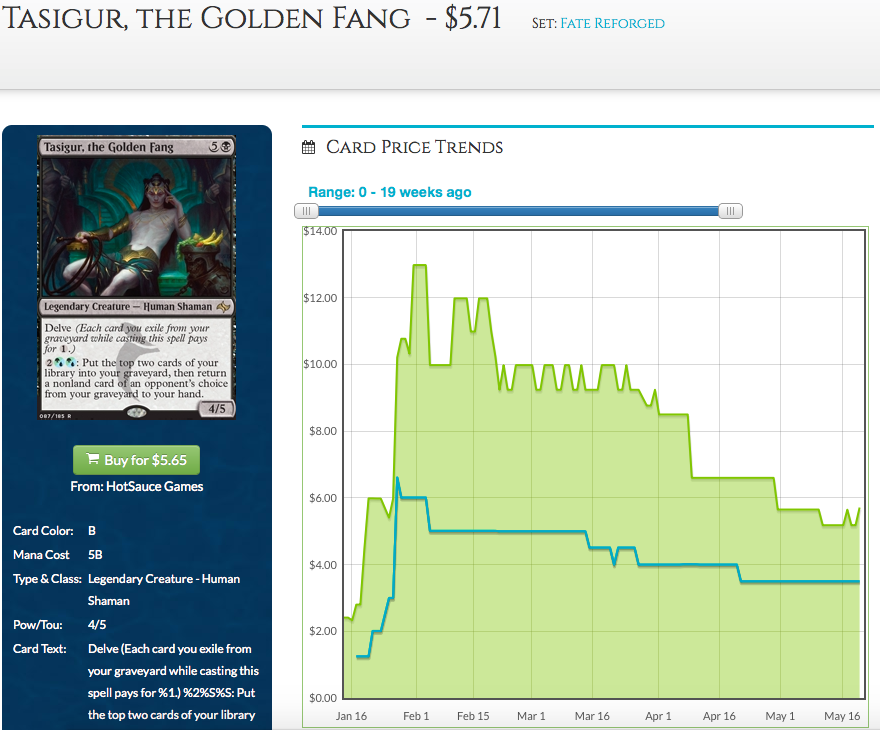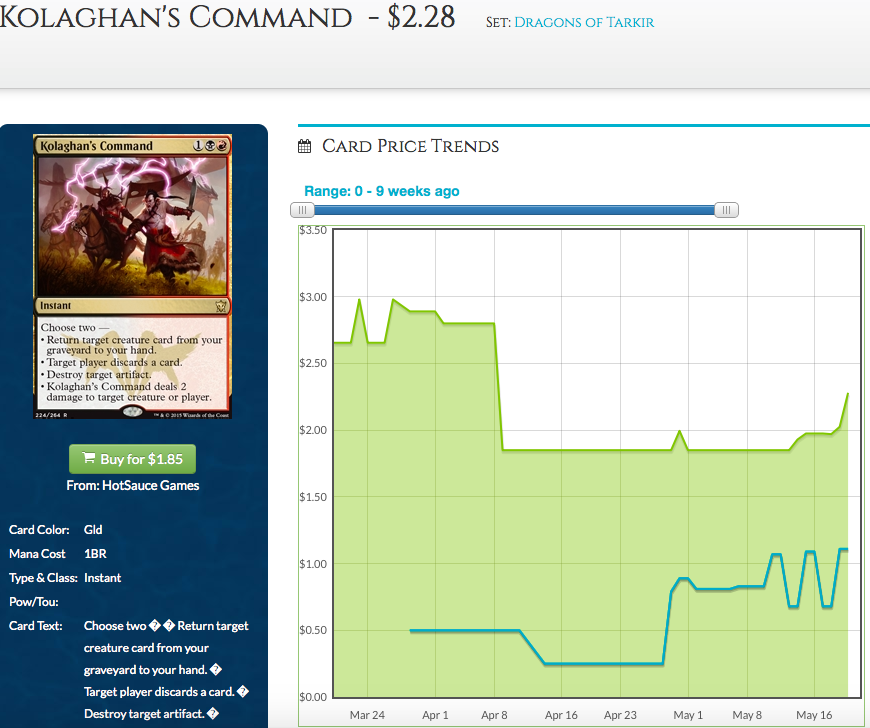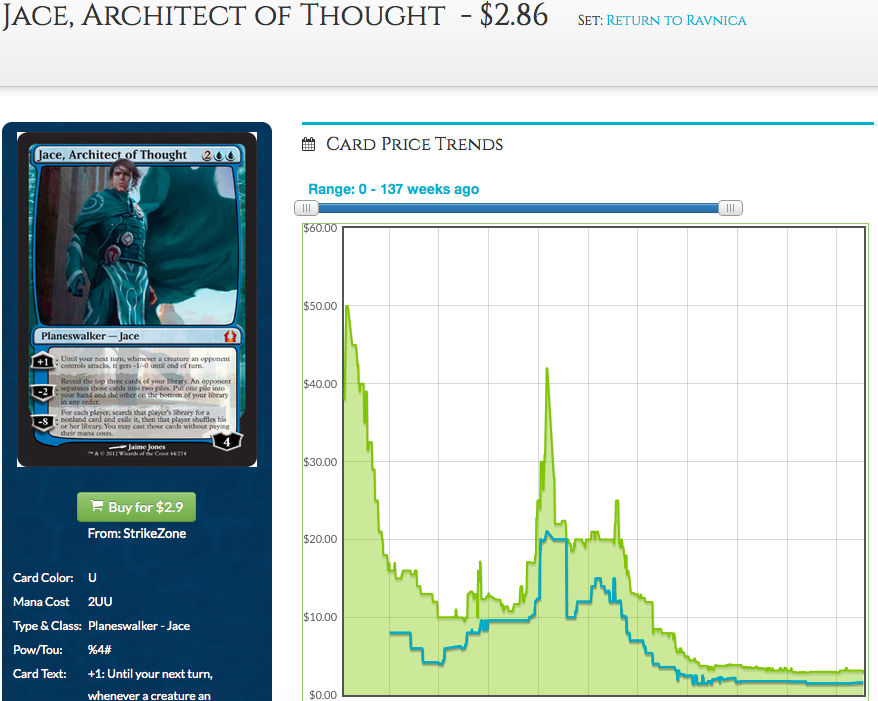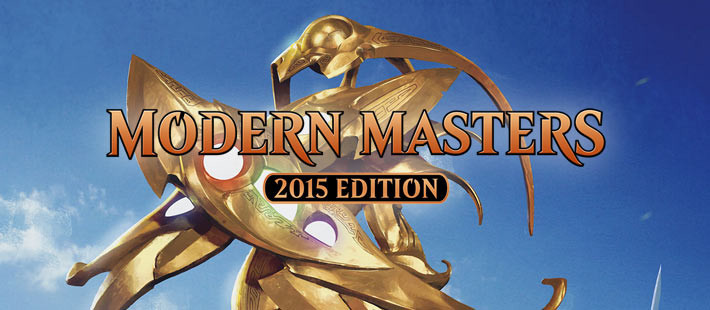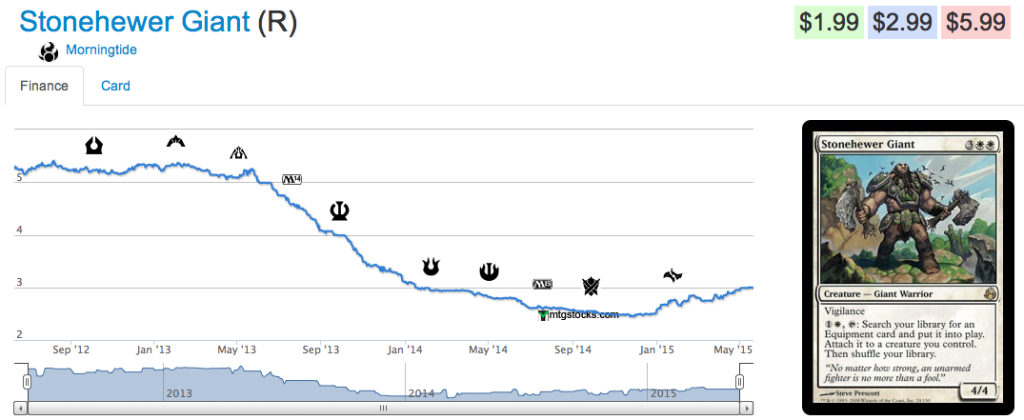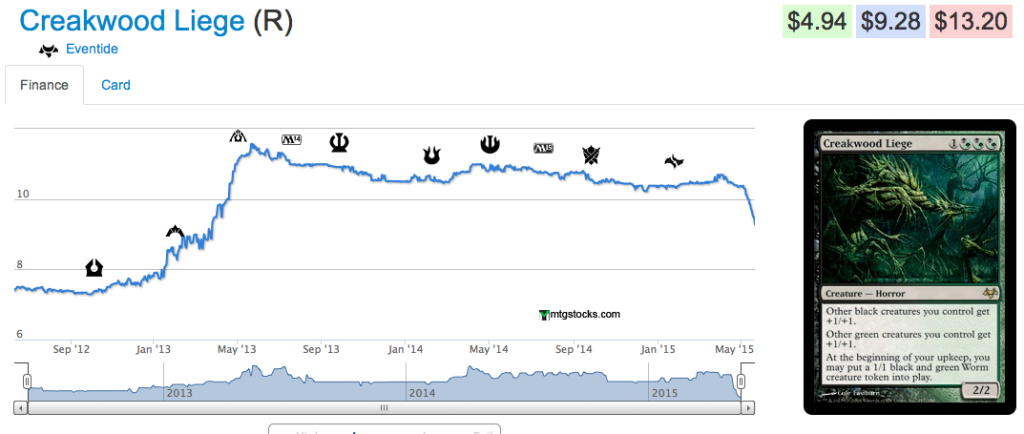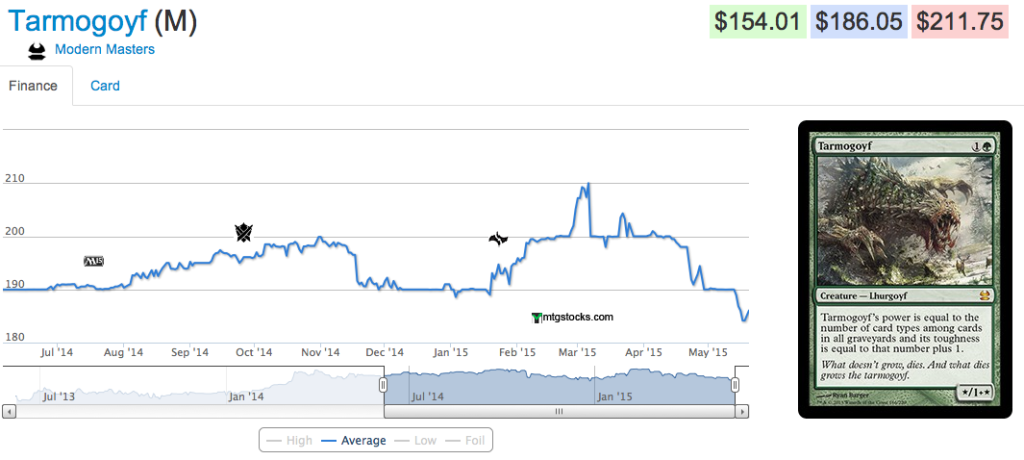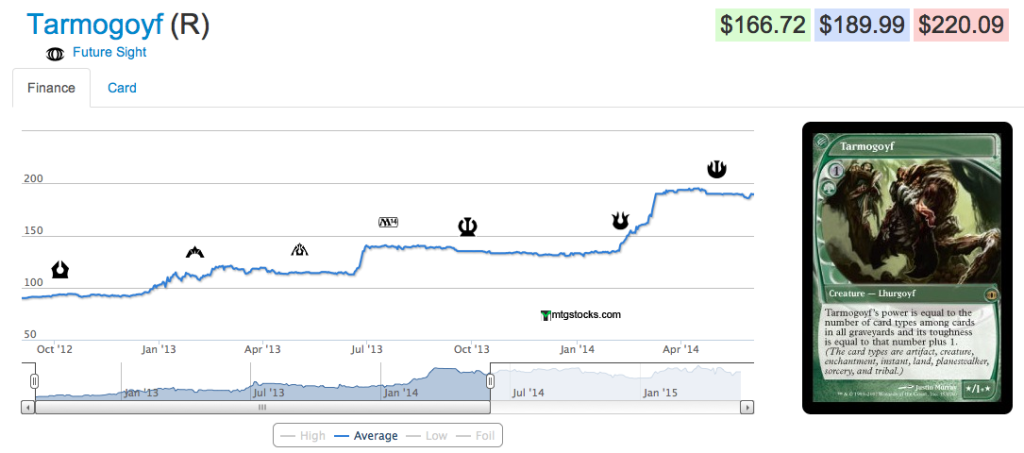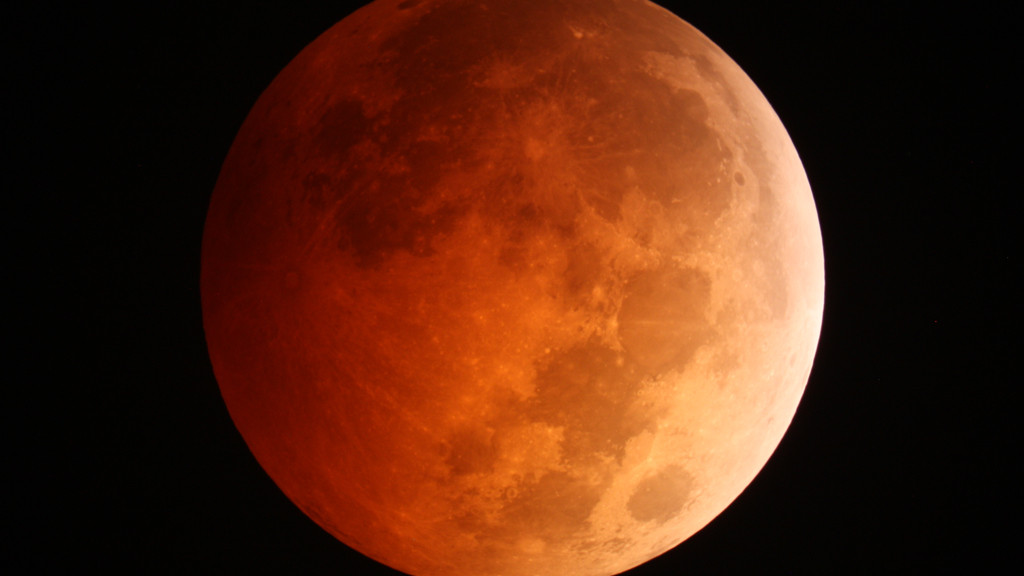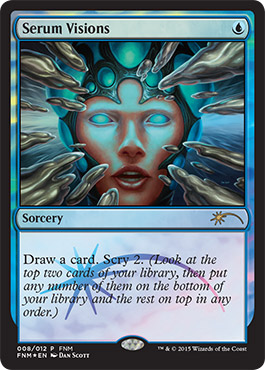BRIEF TEMPORAL ASIDE: I’m jealous of all of you who are reading this, because you are living in a time when Modern Masters 2015 has come out, while I am currently trapped in the past. Are you gonna crack some packs? I know I am! Cracking packs is so much fun.
Rather than talking about Modern Masters 2015, I want to talk about Modern itself. A lot of writers have done individual set or block reviews (myself included!), but I don’t think there has been a narrative overview of what Magic was like when those sets were out. We are going to do that, and compile some information that often gets discarded. You’ll see what I mean as we go along.
Eighth Edition
This was the first set to feature the new card face that would later go on to kill Magic1. The set, like all pre-M10 core sets, was comprised entirely of reprints. The selling point, though, was that this set would contain one reprint from every previous Magic set that had not been in a core set already. Neat!
And while several of those reprints are underwhelming on the order of Vexing Arcanix and Skull of Orm, there are some good cards in this set! Blood Moon was first reprinted here (and later again in Ninth), and Eighth Edition put such gems into Modern as City of Brass, Intruder Alarm, and Ploooooooow Uuuuuuuuuuuundeeeeeeeeeeeeeeer (I really like casting Plow Under).
Other finance gems worth noting include Planar Portal, the Urza-tron lands, and foil copies of Fecundity, Merchant Scroll, and Vernal Bloom. The first Standard format that Eighth Edition came into was Odyssey/Onslaught/Eighth, and neither of those expert-level blocks are Modern legal—if you want to see what the format looked like, check out the 2003 World Champs. Oh, and they made a big deal about the prerelease (even though the promo was Rukh Egg), and I won mine.
Non-Foil Cards of Note
Blood Moon – This card is in good Modern decks and bad Legacy decks.
Ensnaring Bridge – Modern, Legacy, Cube, Commander, Casual.
Bribery – Commander only. [Editor’s note: Cube would like to have a word with you, Ross.]
Grave Pact – Commander only also.
Lord of the Undead – I’m beginning to sense a pattern.
Defense Grid – Mostly Commander, some Modern.
Elvish Piper – Commander, and the eventual inverse of Tiny Leaders (Okks?).
Coat of Arms – Commander and any weird tribal format.
Choke – Modern, Legacy, and anything that is dominated by blue.
Foils of Note that Aren’t Just the Same as Above
Birds of Paradise – I’m not entirely sure why, but this is one of the most expensive printings of Birds. Seventh Edition foils blows these out of the water, though.
Storm Crow – I hate that the Storm Crow people have made this happen. Retail “price” of $32, best buylist price of $4. One of those prices is off, and I think it’s the first one.
Merchant Scroll – Vintage!
Teferi’s Puzzle Box: Casual favorite, I suppose?
Ambition’s Cost: Only foil printing of this card.
Noteworthy Standard Decks
NONE.
Now, I do love me some UG Madness2 and some Goblin Bidding, but that’s not really what this section is going to be for. As we roll into future sets, I’ll mention any decks that I think may be worth having on a resurrection radar—maybe an old archetype could benefit from new technology! I don’t expect much, but it’s worth looking. Also, I’ll be able to tell you if a deck was the real deal (like Karstenbot) or bogus (like Ghost Dad).
Analysis
There are a lot of foils in this set that are worth money, and there are fifteen rares worth $3 or more. The downside is that the set had 111 rares, so only about ten percent of the rares are worth the typical price of admission. There are some major wins if you hit on a foil, but I’m not going to tell you to buy a bunch of old packs to hopefully open a foil rare.
This set, despite its gimmick, was not super popular, since most of the marquee cards at the time (Persecute, Birds of Paradise, Wrath of God) were cards that enfranchised players already owned. Sealed packs look to be between $5 and $8 (ignoring shipping), so that’s not quite low enough to look appealing. If you are a gambler, and your local store has had these on a shelf since 2003, maybe they’ll take $3 each just to clear up space, but even then, 111 rares is a lot. To compare, there are 73 rares and mythics combined in M15, and only 68 rares and mythics combined in Dragons of Tarkir. If you open a box and each rare is different, you are only going to open 32 percent of the rares in the set, and only about three to five of them are expected to be “hits” (versus the lower price of entry, if you can even get it).
The prudent thing to do is to stay away, which means that these cards are going to slowly keep creeping up in value. All of the cards in here are prime candidates for reprinting in a future Modern Masters or Commander product (it’s already happened for some), although some of the more powerful cards, like Plow Under, are unlikely to ever be put in Standard again.
Oh, and I’ll mention this now since we were talking about packs: don’t forget that the foil distribution process didn’t change until Planar Chaos (where the foil replaces a common), so if you open a foil rare, that is also your rare. You can’t get two rares.
Parting Words
Don’t buy packs, do look up any foils that you see in longboxes where you don’t already know the price.
Mirrodin
This was the first expert-level set to feature the new card frame, and, to be fair, did a pretty good job as a block trying to kill Magic. This was also the first set to leave Dominaria in a long time, and we wouldn’t return until Time Spiral. The block’s theme was “artifacts matter,” and the books were terrible. I don’t want to talk too much about the block as a whole, since we are going through sets individually, which will probably help me limit my hateful vitriol to Darksteel where it belongs.
Mirrodin introduced affinity, equipment, and Mindslaver to Magic, so it certainly has had an impact. The set definitely had hype going into release, and the massive amount of design space devoted to cool artifacts has definitely given the world several casual favorites. The prerelease card, Sword of Kaldra, was a big hit with the Timmy/Tammy crowd, and the only reason it isn’t worth more is because I doubt most newer players are aware it exists3.
I remember Mirrodin pretty well, because it was around the time I started FNMing weekly as a priority. Like Eighth Edition, much of the analysis of this set in terms of Standard is going to be warped by the inclusion of sets that aren’t Modern legal (in this case, just Onslaught, one of the coolest blocks ever), and also by the fact that several of the best cards in this block got banned. I remember FNMs were getting pretty big around this time (I hopped between a few different stores). If only they knew what was about to happen…
Non-Foil Cards of Note
Chalice of the Void – Took off as anti-Treasure Cruise technology, and hasn’t come down since. The card is very good in older and more cutthroat formats like Legacy and Vintage, since there are more aggressive forms of “fast mana.” This card was a player in Old Extended with the next card on the list.
Chrome Mox – It should not come as a surprise that when WOTC uses the word “Mox” in a name that the card is very good. This card is considered to be too good for Modern, but it’s about right in Legacy, since going down an extra card when you play it is more taxing. Something to notice on Chrome Mox and some of the other top cards on this list: the buylist prices are all very good. Often a smaller spread between a buylist price and a retail price can mean copies are viewed as easy guaranteed sales, which you can extrapolate as expressed confidence in the card in the long term. If the big dealers like something, then you probably should too.
Oblivion Stone – This card went from zero to hero with the advent of EDH, and has cemented a place in Modern with the consistent success of Tron decks. Two big populations like this card, and it’s pretty good in Cube, too. This is basically Nevinyrral’s Disk to a generation of players. That’s a good thing.
Glimmervoid – Some versions of Affinity play lots of spells of different colors, so this is pretty much their best land.
Tooth and Nail – If you resolve this in Constructed, you win. There are lots of different two card combos to find with Tooth and Nail, but I’ll always have a soft spot for Mephidross Vampire and Triskelion. For a while, Tooth and Nail was an easy twenty bucks, so don’t be surprised if the current price of $8 balloons up again.
Duplicant – Popular EDH card and actual spot removal spell in Vintage (you can cast it off Mishra’s Workshop!). Yes, this is why the foil price is insane.
Platinum Angel – Despite a couple reprints, this is one of those marquee cards that is always going to keep a respectable price. “You can’t lose” is pretty appealing to most Magic players and/or Parker Lewis.
Sculpting Steel – Another card that is good because of Mishra’s Workshop, although this has largely been co-opted by Phyrexian Metamorph.
Goblin Charbelcher – Best card in Magic.
Foils of Note that Aren’t Just the Same as Above
Solemn Simulacrum – This is the original set foil version of this card. Sad Robot, perhaps, but at that price, I’d be smiling.
Lightning Greaves – EDH staple, or at least it used to be. Also original set foil.
Mindslaver – The other best card in Magic.
Thoughtcast – Again, original set foil. This card is crucial in Affinity decks, since playing your entire hand at once typically becomes a disadvantage if the game goes on for much longer.
Sylvan Scrying – Original set foil, finds Urza lands and other toolbox effects. Played as a 4x in a few Modern decks.
Talisman of Dominance – Played in Legacy, believe it or not.
Molten Rain – This card hasn’t been in either Modern Masters set yet, which is surprising. This card is very good, and I’m surprised the foils are only $10.
Noteworthy Standard Decks
Broodstar Affinity – It didn’t take long (by 2003 standards) for Affinity to be uncovered as an extremely unfair mechanic. The five artifact lands, in concert with Disciple of the Vault and Atog (yes, really), helped enable some extremely degenerate strategies.
The decks also featured Broodstar, a heavy-hitting beater that would get in large chunks of damage coming down extremely early. Broodstar was a serious threat, and is probably the only Affinity-era star to not get serious consideration in Modern. The reason why is likely because Affinity decks now lean towards strategies that better support Cranial Plating, which encourages a wide threat of small artifact creatures, rather than just a bunch of artifacts. I’m not sure if Broodstar adds anything to existing Affinity strategies or if building a new version around the flier is worth exploring, but Broodstars are currently dirt cheap and Affinity is very popular in Modern (and Legacy!). Much of the other stuff that was in these lists was later replaced by better cards in the other two sets (sorry, Scale of Chiss-Goria).
RDW – Red decks are always going to try to be as lean and redundant as possible, so it’s hard to find something that is “hidden” in terms of red deck technology. Molten Rain is probably as good an example of a hidden gem as red decks can get, which should tell you how little meat is still left on the bone. Arc Slogger does not belong anywhere near your Modern red deck. Slith Firewalker is probably not even good enough, which stinks.
Analysis
Looking through the foil prices on Mirrodin, I started to realize how many good cards there are in this set. While you can never truly judge a book or a Magic set by its cover, I think it actually makes thematic sense that Mirrodin has a wide variety of cards with casual appeal. Artifacts, by their nature, are accessible to decks of every color, so the demand is more widespread—if something is good, it’s a card that all EDH players want, not just ones playing blue (like Bribery) or green (like that dumb creature that does a thing). Put a pin in this topic, we’ll come back to it in a bit.
Anyway, boxes look to be about $250, which puts packs just shy of $7. There are only eleven cards that beat that mark (or come super close, like Sculpting Steel), so buying packs is a losing proposition once again (this is often going to be the case). There are a few uncommons and commons of value in the set, including Wrench Mind, which is the closest Modern is ever going to get to Hymn to Tourach4. This is a great set to pick through when you are looking at bulk, and there are a handful of cards out of this set that may be worth a closer look (I’ll be changing the way I do my set reviews to better fit this new series in the future, so they are complimentary pieces rather than basically writing the same thing twice).
It’s worth mentioning once again that Mirrodin on release was a very popular set. Standard was still heavily defined by Onslaught, but that set, while it featured some pretty powerful strategies, wasn’t so strong that it overshadowed new tech. There were a lot of people, myself included, who were just happy that Odyssey block was gone, if you can believe that. Those sets were cool, but rewarded thinking in a way that was only clear to very good players.
Coming up next: the set that would send the tournament player base into a nose dive.
Two Sets Down…
Let me know what you thought of today’s article. It’s fun to go back and parse out what we didn’t know when all this was happening, and I try to interject what I remember personally (this will get easier as we progress and sets are more recent in my memory, except for those years where my LGS was next to an Outback Steakhouse that did happy hour right before FNM). If there is something you’d like to see me add, or you’d rather me just stick to our old set reviews, let me know. Thanks, and I’ll see you next week!
Best,
Ross
P.S. Word is that it is possible to reseal Modern Masters 2015 packs. Do not buy packs from someone you don’t trust completely, and be extremely scrupulous. Also, as a way to be respectful to other players, don’t discard the packaging in a way that other people may be able to reuse your packaging. And make sure to actually recycle them! That’s what this change was for in the first place.
P.P.S. Sounds like cards are coming out of the packs with scuffing and damage. This is likely due to the new packaging method. More on that as it unfolds.
P.P.P.S. Remember when I said to put a pin in what we were talking about before? Here’s the elevator pitch version of every Modern block in three words. Tell me which jump out as the best sets for casual cards:
- Mirrodin: Lots of artifacts!
- Kamigawa: Lots of legends!
- Ravnica 1: Ten color pairs!
- Time Spiral: Sure, why not?!
- Lorwyn: Lots of tribal!
- Shadowmoor: Lorwyn minus tribal!
- Alara: Now three colors!
- Zendikar: Lands and Cthulhu!
- Scars: Mirrodin plus poison!
- Innistrad: This is Halloween!
- Return to Ravnica: You loved Ravnica!
- Theros: Remember Homer’s “Odyssey”?
- Tarkir: Wedges and dragons!
1 Clearly it didn’t, but that was the assumption.
2 This was also the name of one of Magic’s few webcomics. I really liked it, and it’s where I got my Mise shirt.
3 The concept of exposure is something we’ve been talking about on the forums lately.
4 Although I’m holding out for an eventual “dinosaur world” set featuring a functional reprint named “Hymn to Turok.”
